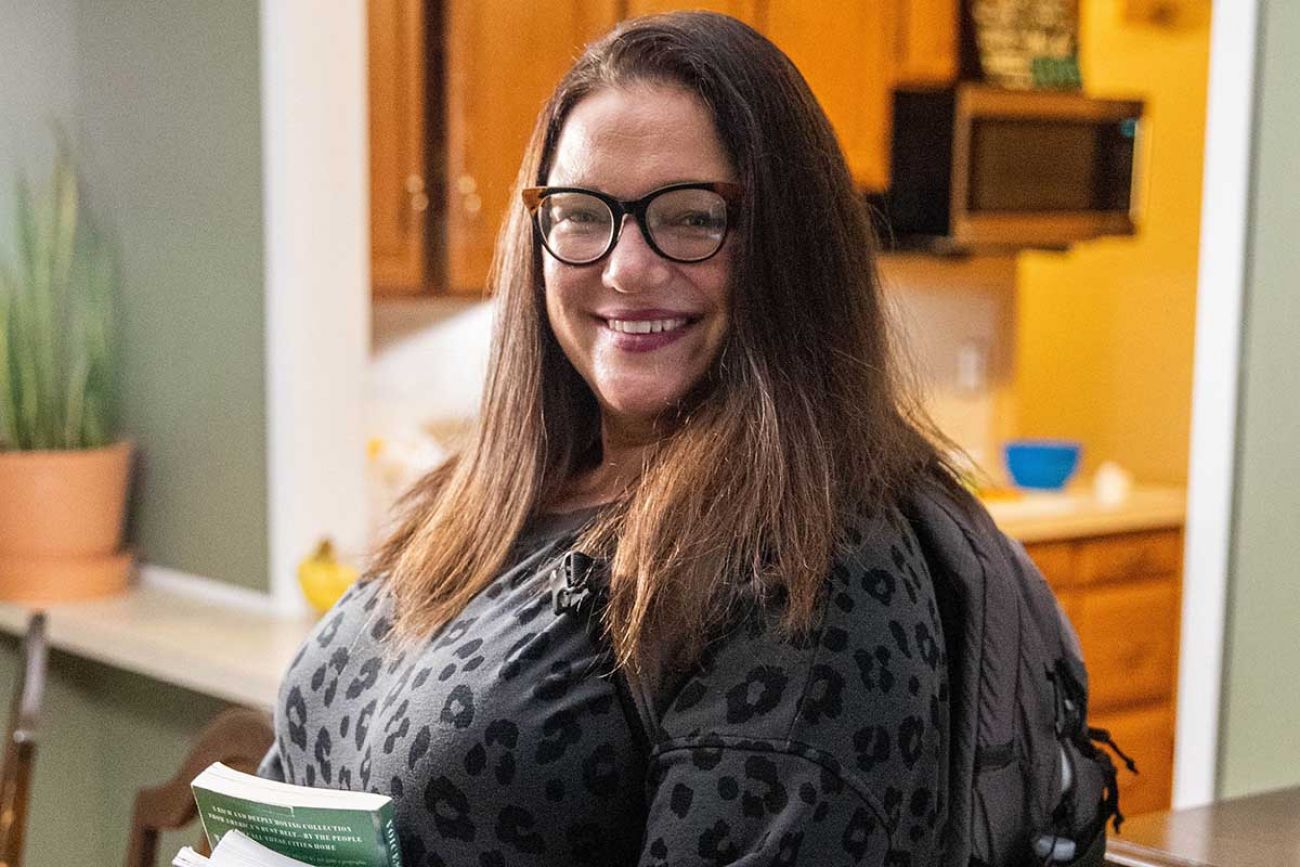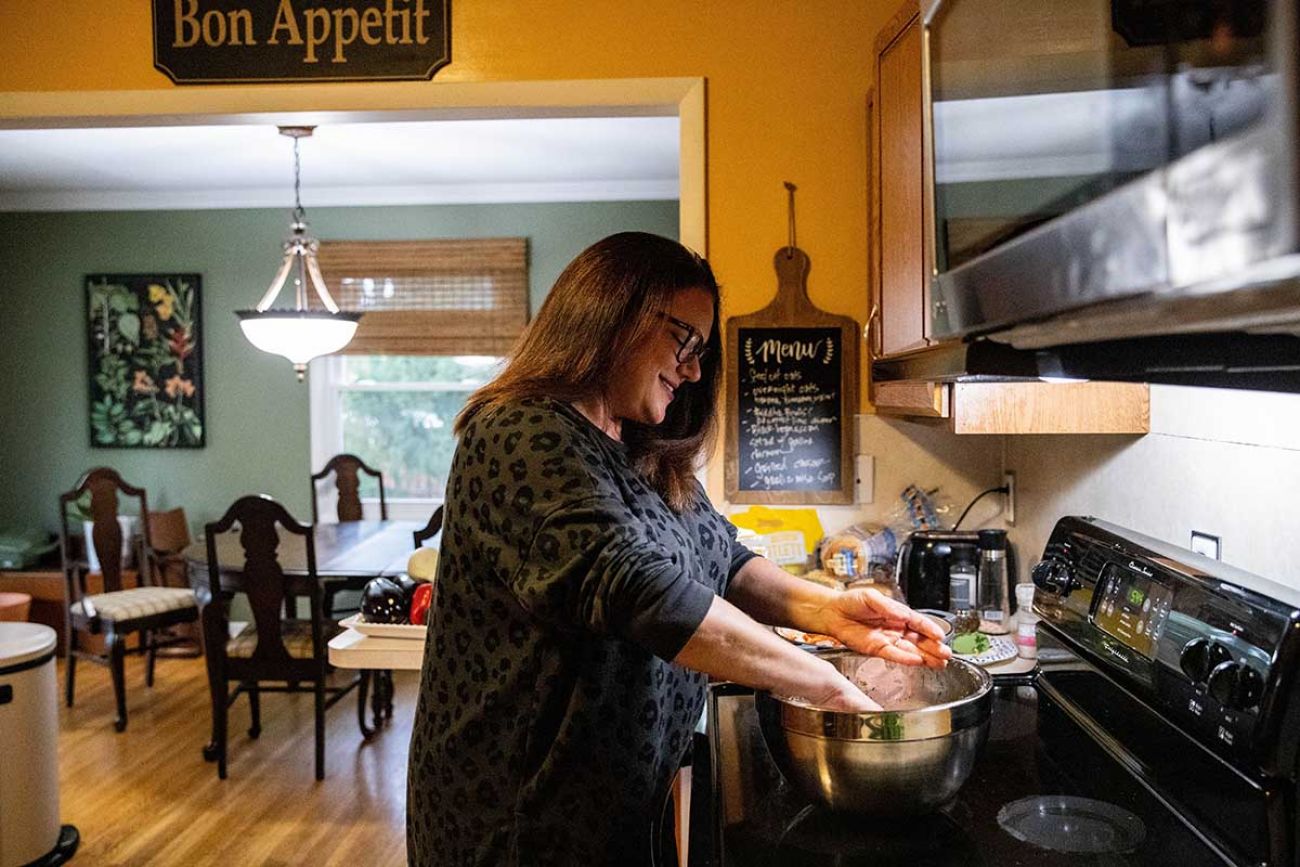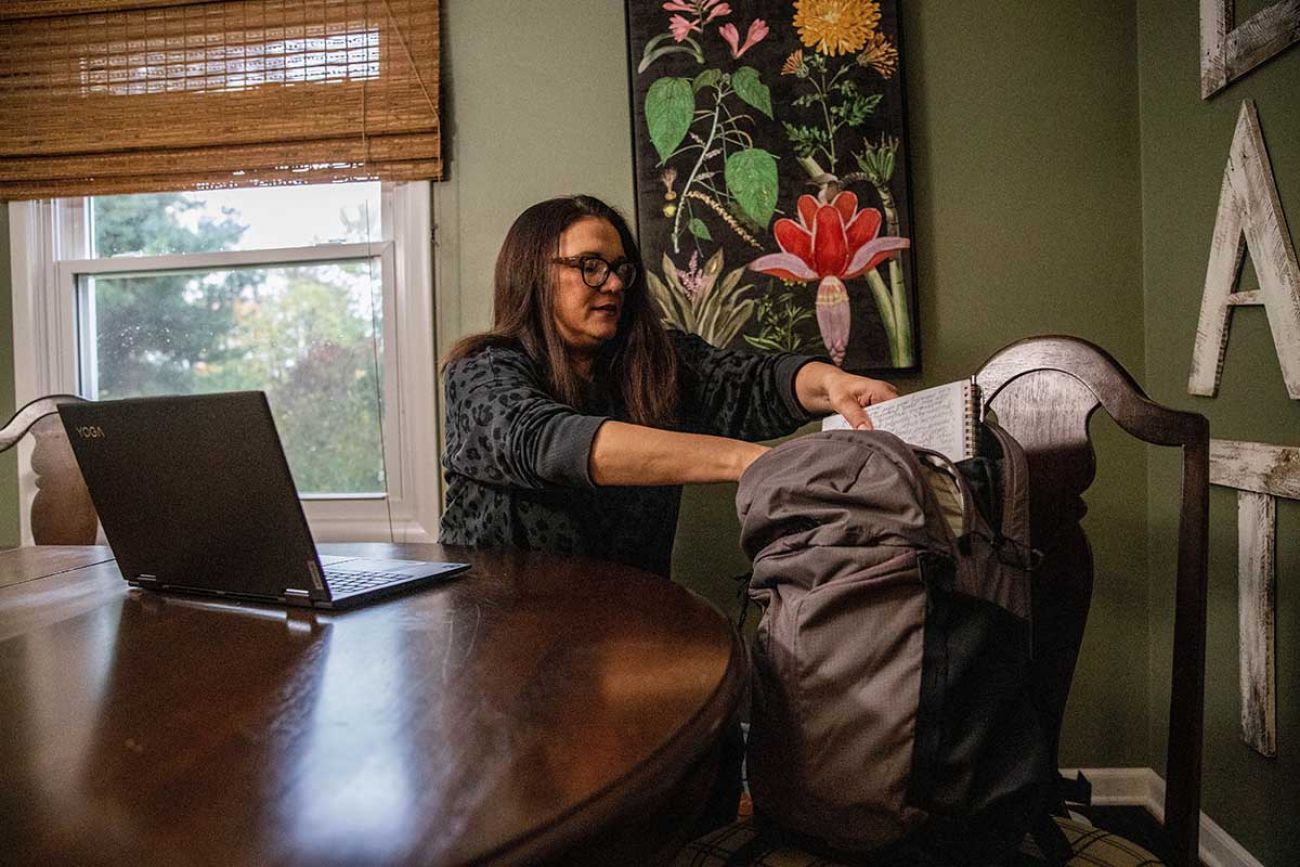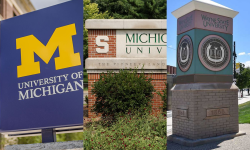Free tuition lured Michigan adults to college. Next job: Keeping them there

Somewhere between her full-time job as a sleep clinic technician, making meals for three children and getting a few hours of sleep, Amanda Hedges-Harrison recently missed a deadline for an English composition assignment at Grand Rapids Community College.
The Grand Rapids woman had dropped out of community college 20 years ago when she learned she was pregnant with her first child. A second one came soon after and then a third, and in what felt like a blink of an eye she was 45 and thinking it was too late to earn a degree.
“Every year, I said, ‘I’m going to go back, I’m going to go back,’ but I was never able to do it financially,” Hedges-Harrison said. “I didn’t know how to work it out with young children.”
Related:
- Michigan college COVID outbreaks plummet as students vaccinate and mask up
- Back to school: Michigan free college tuition program attracts 70,000
- Deadline nears for thousands of Michigan residents offered free tuition
This fall, Hedges-Harrison joined more than 22,000 Michigan residents who either returned to college or enrolled for the first time through a $134 million state investment to make community college tuition-free for most adults. It’ll be several years before the impact of the programs are known, but tuition-free community college has the potential to be a game-changer for Michigan’s economy, as well as for people like Hedges-Harrison, for whom “free” was the motivation to enroll.
One key to the success or failure of those programs may be efforts by schools to engage older college students in ways similar to what happened after Hedges-Harrison missed that assignment.

“The English teacher sent me an email checking on me,” said Hedges-Harrison, who is taking two classes this semester. “Then the support team called and left a voicemail: ‘How can we support you? Just remember the office hours of your teacher. We want to support you anyway we can.’”
For Hedges-Harrison, the check-ins weren’t necessary — she had mistakenly thought the assignments were due a week later, and she says she is enthused to return to school. Still, the quick interventions reflect a recognition that for all the promise of the Futures for Frontliners and Michigan Reconnect programs, they will only be as successful as colleges’ efforts to keep these students on campus long enough to earn degrees.
The administration of Gov. Gretchen Whitmer has a goal of increasing the percentage of working-age adults with college degrees or certificates from 49 percent to 60 percent by 2030. The current national average is 52 percent.
Increasing college degrees is important because income generally rises with education. Nationally, high school grads earned $38,792, on average in 2019, compared to $46,124 for those with a two-year associate’s degree and $64,896 for those with a four-year bachelor’s degree, according to data from the U.S Bureau of Labor Statistics.
Michigan is below the national average among states in the percentage of adults with college degrees, which suppresses incomes and hobbles the state’s attempts to attract businesses with the promise of a skilled workforce.
Whitmer launched the Futures for Frontliners program in September 2020, offering free tuition for many state residents who had to leave their homes and work during the first few months after COVID-19 struck the state. In February, Whitmer then launched Michigan Reconnect, which offers free community college tuition and funds toward private job training programs for residents age 25 and older who do not already have a college degree. Students are still responsible for other costs associated with school, such as books.
Through this summer, about 22,000 state residents had enrolled in community colleges through the programs. That figure is expected to increase when figures from the fall semester are included.
One of those fall enrollees was Hedges-Harrison. In an interview with Bridge Michigan, she recalled scrolling the website of the Grand Rapids Community College online store, looking for just the right backpack. She ordered a gray one, then books for her classes. Even though she could read them online for free, she said she wanted them “in my hands.”

A friend gave her a special gift – a pen she had bought for herself when she had returned to college after years away.
Now, it was Amanda’s turn.
“It was exciting,” Hedges-Harrison said. “As much as I wanted to go back to school, I never thought it was going to be a reality for me.”
That reality is made easier by a community college system evolving to cater to older, busier students like Hedges-Harrison.
Both her classes are fully online — she’s yet to step foot on the GRCC campus, where the share of online courses has jumped from 25 percent to 40 percent in two years. The school has switched some classes from a traditional 14-week format to a more intensive seven-week schedule, to make it easier for busy adults who can’t commit to a regular semester.
Those moves, meant to attract adults who are attending tuition-free through the new state programs, appear to be working. At GRCC, 24 percent of students this fall (3,017 out of 12,685) are enrolled through Futures for Frontliners or Michigan Reconnect, according to data released by the college.
The share of students in these tuition-free programs in 28 community colleges statewide won’t be tabulated until early 2022. Mike Hanson, executive director of the Michigan Community College Association, estimates between 10 and 15 percent of community college students this fall are getting their tuition paid by the state.
Among the roughly 3,000 tuition-free students at GRCC this fall, about 2,000 had never attended college before; more than 500 last enrolled in a college class at least 10 years ago.
Keeping them there is the next challenge.
“We want students to be successful once they come back, especially those who have been gone for years,” said David Murray, spokesperson for the college. “We don’t want them to struggle in that first semester and not come back.”
That’s been a long-standing problem at Michigan’s community colleges. For students who enrolled seeking an associate’s degree or a certificate in 2018, just 22 percent succeeded four years later. Nationally, the graduation rate among community colleges is 31 percent.
In response to the two tuition-free programs, GRCC is beefing up its student support staff to intervene at the first sign of academic disengagement among those typically older students, most of whom have jobs and families. At least eight current staff members are assigned to student intervention, with plans to hire more.
“We tell our students, ‘You are not in this alone. We’re here to walk with you on this journey and we are here to help,” Murray said.
Even with the extra support, there are still frustrations.
Hedges-Harrison said she has struggled to schedule an appointment with an academic advisor. Those appointments are vital for new students who are unsure which classes will earn credit toward their associate degrees.

Hedges-Harrison, who wants to eventually become a mental health counselor, studies during her lunch break at her sleep clinic job, reading class assignments while eating leftovers. After work, she chauffeurs a 15-year-old son to football practice and a 13-year-old daughter to cheerleading practice, prepares dinner and packs the next day’s lunches for the kids. Then, she retreats to her bedroom to study more.
Her husband, a truck driver, was initially skeptical about Hedges-Harrison returning to school, fearing she’d be overwhelmed by all her responsibilities. “He’s starting to get on board,” she said.
“My oldest son (who is 20), he said, ‘Mom, I’m proud of you, this takes so much work,’” Hedges-Harrison said. “He didn’t go to college out of high school and I thought, maybe this will encourage him, to let him know he doesn’t have to take just whatever job he can get. I want (my children) to realize they have choices about what they do and where they go.”
The deadline for joining Futures for Frontliners has passed, but Michigan Reconnect is a continuing program, with the state accepting applications on a continuing basis.
“I'm excited and scared and nervous to be returning,” she said.
“I worry about work/life/school balance and managing my time well. (But) it’s more doable than you think. And it’s different going to school when you’re older. It’s a ‘get to,’ rather than a ‘have to.’”
Michigan Education Watch
Michigan Education Watch is made possible by generous financial support from:
Subscribe to Michigan Health Watch
See what new members are saying about why they donated to Bridge Michigan:
- “In order for this information to be accurate and unbiased it must be underwritten by its readers, not by special interests.” - Larry S.
- “Not many other media sources report on the topics Bridge does.” - Susan B.
- “Your journalism is outstanding and rare these days.” - Mark S.
If you want to ensure the future of nonpartisan, nonprofit Michigan journalism, please become a member today. You, too, will be asked why you donated and maybe we'll feature your quote next time!





